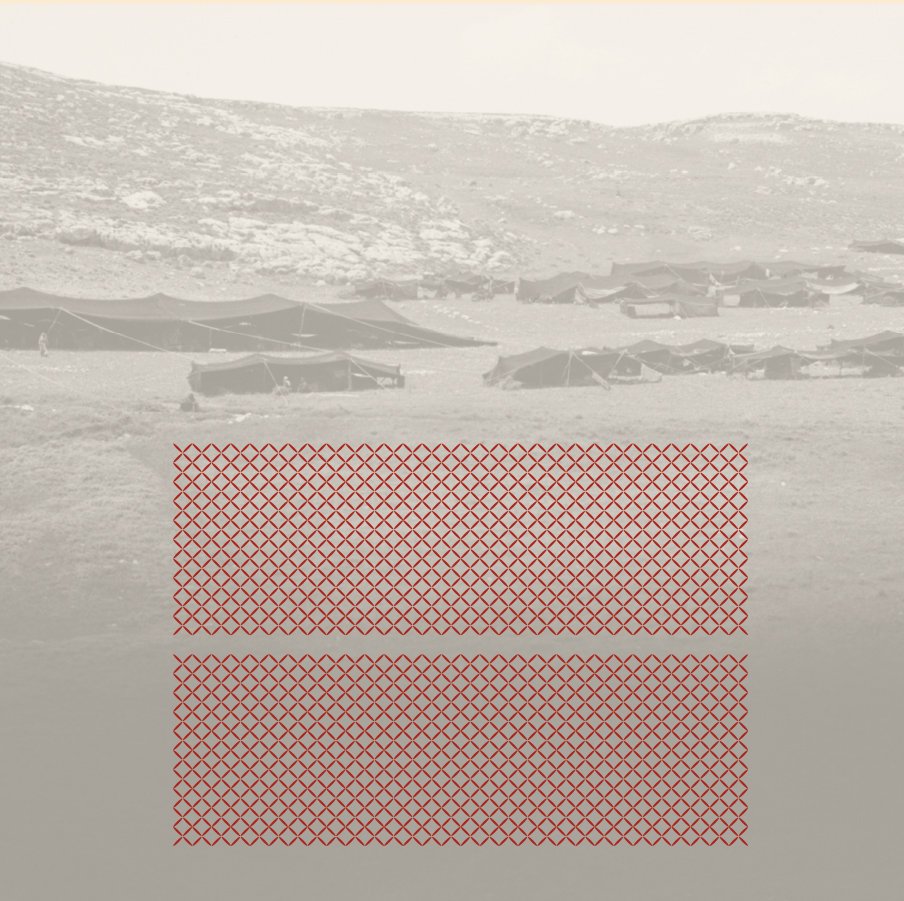
Jordan.
The Mystery of Geometry.
Shirsh, dress from Mafraq, north Jordan, 1940s
THE JORDANIAN THOBE
THE JORDANIAN DRESS, or thobe, was worn by all Jordanians, not just the villagers. It was unique and had its own style. Always black in color, it measured anywhere from 3.3 meters long to a square cloth of 1.5 meters. Unfortunately, due to the rapid modernization of Jordan in the last 100 years, very few of these dresses can still be found. Difference in dresses could be seen according to the different tribes of the areas.
left: Irbid dress; right: Salt dress; 1930s
Widad Kawar Collection
Jordan was known for its intricate heavily decorated rugs, especially those woven on ground looms by the Bedouin women. Generally, when looking at the Jordanian dress (except for that of Ma’an) the first thing that comes to mind is their resemblance to the patterns in the Bedouin carpets. Little embroidery was used to decorate the Jordanian dress except for the lines around the hem and the chest areas. In the northern towns of Jerash, Ajloun, Irbid, Mafraq, Um Qais and the surrounding villages, these dresses were called shirsh. They were worn without a belt and decorated with embroidered lines called huzuz and with a special stitch called raqme.
Bedouin women in front of their house (Beit al Sha’r, house of Hair); 1920s
The Salt dress – khalaga was the largest dress in the world being about 3.2 meters long. People have always been astonished by its scale and the amount of fabric used in the dress. This type of dress, which was folded up into a pocket when wearing, was called a ‘double or pocket dress’ – thobe-ubb. Why and how this dress from Salt became that large is still a riddle to many Jordanians. But from a functional aspect, the folding of the fabric was used to create a large pocket that could carry a small child, personal belongings or groceries. Sometimes the khalaga was decorated with strips of blue fabric on the hem or sleeves.
Young woman embroidering in her full Salti attire, Salt, Jordan; 1920s
In the towns of southern Jordan, as in Kerak, the dresses were double pocket dresses similar to those of Salt but were called matraqa. On festive occasions they were decorated with cross-stitch embroidery a bit similar to the dresses in Palestine.
left: Matraga, dress from Karak, Jordan, 1950s. right: Hidim, overcoat from Ma’an, southern Jordan, 1920s Widad Kawar Collection
The Ma’an dress was very different to those from other areas in Jordan. During the time of the Hejaz railway, pilgrims from all over the world stopped in Ma’an on their way to the Haj and would sell their silks in the market. From those hand-woven silks, women put together beautiful dresses in striking combinations of colors.
More to explore
-
Palestine
Palestinian embroidery, or tatreez, flourished over 100 years ago, evolving into a dazzling variety of styles and motifs that differed from region to region, even village to village.

-
Syria
Once a center for weaving rich textiles, Syria influenced dressmaking all over the Levant. Its dresses came in a dazzling variety of colors and interwove Arab, Ottoman and European influences.






